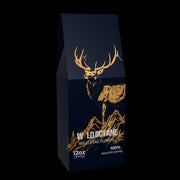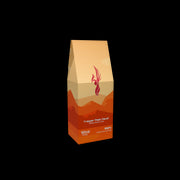French roast coffee has its origins deeply rooted in the art of coffee roasting, which dates back centuries. While coffee was first discovered in Ethiopia, it gained significant popularity in Europe, particularly in France, during the 17th century. The French were known for their innovative roasting techniques, which resulted in a unique flavor profile.
The term “French roast” came to be associated with a specific roasting style, characterized by its dark color and smoky flavor. This roasting method became especially popular in the United States during the 1980s, where coffee enthusiasts began to appreciate the bold and intense flavors that French roast offered.
Characteristics of French Roast Coffee
French roast coffee is distinct in several ways:
-
Roast Level: French roast is typically a dark roast, often categorized as one of the darkest roasting levels, alongside Italian and Spanish roasts. The beans are roasted until they reach an oily surface and a deep brown color, indicating that the natural sugars within the beans have caramelized and the flavors have intensified.
-
Flavor Profile: The flavor of French roast coffee is bold and robust, often with a smoky or charred undertone. This is due to the longer roasting time, which brings out deeper flavors while minimizing the origin characteristics of the beans. You may also notice hints of chocolate or caramel, creating a rich and full-bodied experience.
-
Aroma: The aroma of French roast coffee is intense, with strong notes of smokiness and earthiness. The fragrant smell alone can be enough to wake you up in the morning!
-
Caffeine Content: Interestingly, the roasting process affects the caffeine content in coffee. While many assume that darker roasts contain more caffeine, the opposite is true. Due to the longer roasting time, French roast coffee typically has slightly less caffeine compared to lighter roasts. However, the difference is minimal and often imperceptible.
Brewing Methods for French Roast Coffee
When it comes to brewing French roast coffee, there are several methods that can highlight its unique flavors:
-
French Press: This method is excellent for French roast coffee as it allows the oils and flavors to remain in the cup. Coarsely ground beans steep in hot water for about four minutes, resulting in a rich and full-bodied brew.
-
Pour-Over: Using a pour-over method can also enhance the flavor of French roast coffee. The slow extraction process allows for a balanced and nuanced cup, accentuating the coffee’s bold characteristics.
-
Espresso: French roast coffee can also be used for espresso. The dark roast provides a strong base for espresso drinks like lattes and cappuccinos, delivering a powerful flavor that pairs well with milk.
-
Cold Brew: For a different experience, try using French roast coffee in a cold brew. The process of steeping the coffee in cold water for an extended period (12-24 hours) results in a smooth, less acidic drink that still carries the robust flavors of the roast.
Food Pairings with French Roast Coffee
French roast coffee pairs exceptionally well with various foods, enhancing both the coffee and the dish's flavors. Here are some pairing suggestions:
- Breakfast Foods: French toast, pancakes, or waffles topped with syrup and butter complement the coffee’s rich flavor.
- Pastries: Croissants, danishes, or chocolate croissants are delightful accompaniments, balancing sweetness with the boldness of the coffee.
- Chocolate Desserts: The chocolate notes in French roast coffee make it a perfect partner for chocolate-based desserts, such as brownies, cakes, or truffles.
- Savory Dishes: Consider pairing French roast with hearty breakfast burritos or savory quiches that include ingredients like cheese, ham, or spinach.









